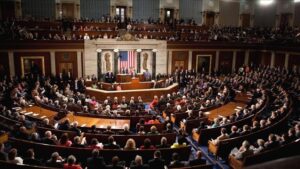New month, new prime minister. Japan’s 67-year-old Shigeru Ishiba is now officially the boss after today’s inauguration ceremony in Tokyo, following his shock victory in last week’s internal Liberal Democratic Party (LDP) leadership race.
It caps off (but also kinda unleashes) quite a bit of drama, so it’s worth a look. First, Ishiba barely won Friday’s internal ballot, beating Shinjiro Koizumi (who would’ve been Japan’s youngest-ever PM) and Sanae Takaichi (who would’ve been Japan’s first female PM).
In the end, the second round of voting tipped in Ishiba’s favour, 215 to Takaichi’s 194.
Stay on top of your world from inside your inbox.
Subscribe for free today and receive way much more insights.
Trusted by 134,000+ subscribers
No spam. No noise. Unsubscribe any time.
So who’s Ishiba? He’s a political veteran and former defence minister who’s been gunning for the top job since at least 2008, with four (!) previous unsuccessful runs.
And the LDP’s political calculus here is intriguing:it’s picked someone more popular with the public than within his own party. He’s a straight-talker with occasional cavalier disregard for the LDP. Why? Partly because he can: he has his own rural power base, having spent most of his career outside the LDP’s Tokyo power circles.
So it’s the combination of this rural base and outsider vibes that got him over the line, but some LDP folks still hold a grudge, like from when he ditched the party back in the 90’s.
And that’s why, facing a dash of dissent and a public tiring of the LDP brand, Ishiba’s first move has been to call national elections for October 27th. He says it’s important the “new administration is judged by the general public as soon as possible.”
How’d we get here?
For starters, Ishiba’s emergence is a signal the LDP wants to clean house after party scandals torpedoed the last guy. But also, and just in case Japan has fallen off your radar (headline real estate is a little tight these days), Ishiba is inheriting:
- A cost of living crisis (household staples like cabbage are up 28%)
- An ageing population (the median age is now ~50, versus 39 in the US)
- Meh growth (Japan’s economy just slipped to 4th place after Germany), and
- An increasingly assertive neighbour to the west (China).
So how have markets reacted to Ishiba? With a wince. Japan’s benchmark Nikkei 225 index tumbled ~5% yesterday (Monday), the first trading day after Ishiba’s win on Friday.
Why the wince? Partly because markets had expected the dovish Ms Takaichi to win. But also, Ishiba seems hawkish, having criticised the ultra-low rates and stimulus previously used to jump-start the economy. He’s even hinted at tax hikes. And markets typically want the opposite: low rates, low taxes, and lots of that sweet sweet stimulus.
So with markets offering an early verdict, Ishiba now has four weeks to win over the voters. His party’s domination of Japanese politics means it’ll retain power, but Ishiba really needs a solid win to assert his leadership.
So his first order of business will be forming a cabinet, and the early signals suggest he’s promising more continuity than revolution: ex chief cabinet secretary Katsunobu Kato will take finance, while fellow ex-defence minister Takeshi Iwaya will handle foreign affairs.
But then it’s about selling his vision, and that’s the bit that’s long been tough to pin down. We’ve touched on his economic views above, but the other big question will be how Ishiba sees Japan fitting into the world:
- In a sense, he wants more of the same, including a military build-up (in response to China) and burying the hatchet with ex-colony Korea (also a response to China)
- But there’s evidence Ishiba wants to go further, including by ‘rebalancing’ Japan’s 1960s-era arrangement for hosting US troops (edgy for the US), pushing for an ‘Asian NATO’ (edgy for China), and even sharing control of the US nuclear deterrent (edgy for all). But much depends on who’s next in the Oval Office.
And yet despite all that, Japan’s elections (like anywhere else) still depend a lot on vibes, and folks just seem to like Ishiba: he has a history of campaigning door-to-door, wearing his heart on his sleeve (he wiped away tears on Friday), slamming down the odd whisky, and even dressing up as Majin Buu from Japan’s iconic anime Dragon Ball (see above).
INTRIGUE’S TAKE
So when faced with a young dynastic reformer or a female firebrand nationalist, yes, Japan’s ruling party went with a safer third option: the 67-year old middle-of-the-road political veteran. But that doesn’t mean there’s no change ahead.
We need only look at Ishiba’s 2012 run when he lost narrowly to a ‘failed’ former prime minister trying to make a comeback. That leader went on to become Japan’s longest-serving and arguably most consequential leader in decades: the late Shinzo Abe.
So it could now be Ishiba’s turn to remake Japan in his own image. But while we’ve pieced together some clues above, Ishiba has really spent most of the last two decades in Japan’s political wilderness. So we don’t really know what he has in store, or if he even knows that himself.
Also worth noting:
- Interestingly, Ishiba is a member of Japan’s tiny (~1.5%) Christian community. Notwithstanding that minority status, Ishiba is Japan’s ninth Christian PM.









